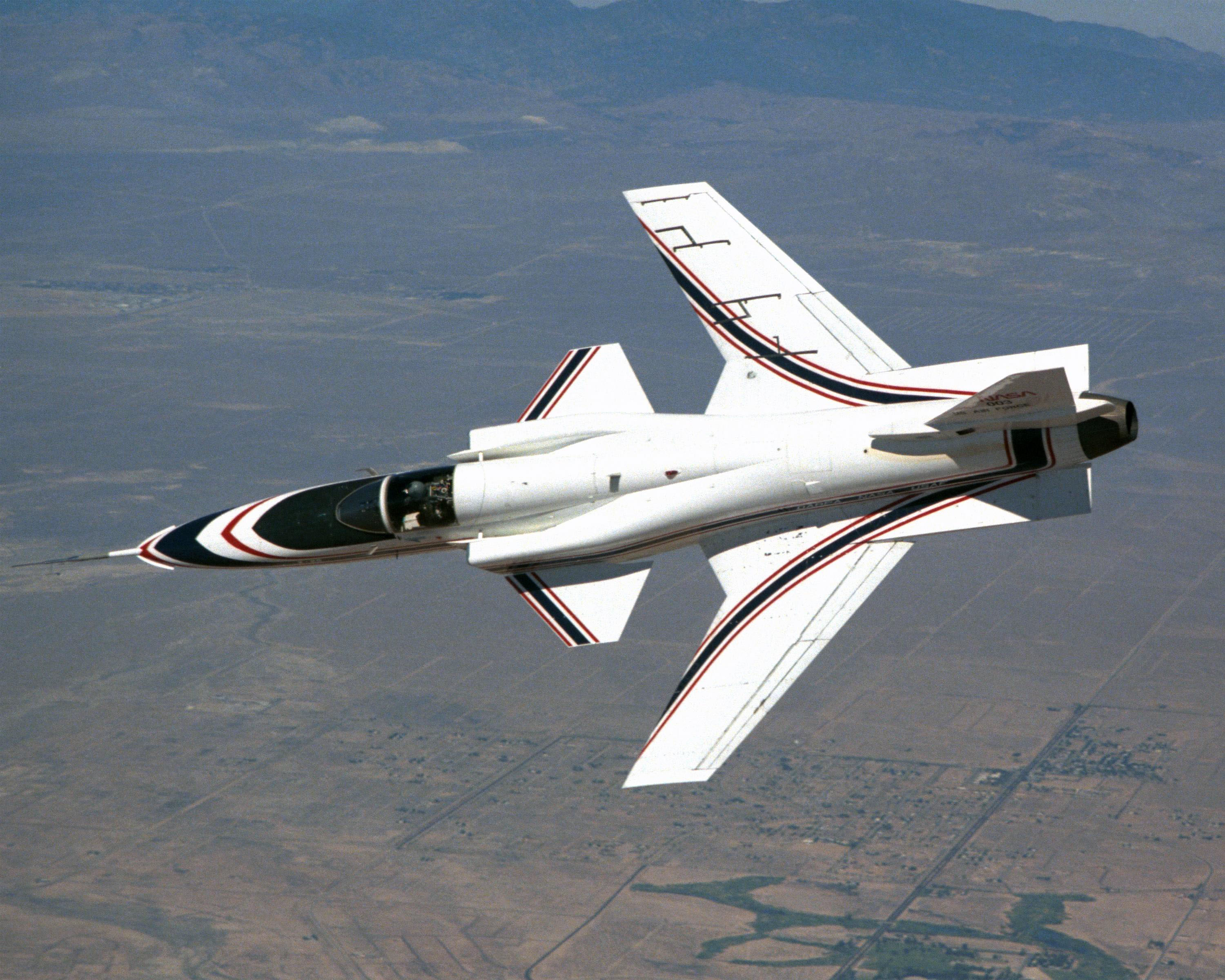Can you identify this forward-swept-wing X-plane? (click the arrow for the answer)
Grumman X-29A
Most aircraft prototypes are built to advance the state of the art or even push the envelope to the next step. The Grumman X-29A advanced technology demonstrator, however, combined a veritable shopping list of developments, cumulatively intended to go one step beyond. The X-29’s airframe included the nose and forward fuselage of a Northrop F-5A Freedom Fighter and the main landing gear of a General Dynamics F-16. That was where the present ended and several speculations on the future were added to the mix. Weight-reducing carbon fiber composites were used in the structure, as was graphite-epoxy for the wings.
The wings themselves were the airplane’s most striking feature. The forward-swept configuration had previously appeared in two German designs, the Junkers Ju-287 bomber of 1944 and the HFB-320 Hansa business jet in 1964. In the X-29’s case, the forward-swept wings were built with a thin supercritical airfoil, variable camber and strake flaps. On a conventional wing, air tends to flow inward toward the wing root rather than outward. The reverse airflow on the X-29’s wings prevented stalling at high angles of attack and the equally unusual canards positioned just in front of the wings helped control pitch. This gave the pilot excellent control response at up to a 45-degree angle of attack. Overall, the X-plane offered exceptional maneuverability at supersonic speeds. The only problem was that the center of gravity was located far aft of the aerodynamic center, rendering the X-29 inherently unstable, beyond even a test pilot’s ability to compensate.
What kept the X-29 in the air was another innovation: a computerized fly-by-wire control system that made flight adjustments at a rate of 40 corrections per second. The result was remarkable flight performance that would be impossible without the computer—an electronic glitch could throw the plane hopelessly out of control. Anticipating this, the designers built in redundancy with three different control systems, each with its own analog computer capable of monitoring the other two.
Two X-29As were built. Powered by a General Electric F404-GE-500 turbojet engine capable of producing 16,000 pounds of thrust on an afterburner, the innovative X-plane had a maximum speed of 1,100 mph (Mach 1.8), a range of 400 miles, and a 55,000-foot ceiling.
X-29A serial no. 82-0003 took off on its first test flight on December 13, 1984, and four months later it began a test program for the National Aeronautics and Space Administration at NASA Ames Dryden Flight Research Center (now Armstrong Flight Research Center) at Edwards Air Force Base in California. By August 1986, the X-29’s computer-backed system had proven its reliability and pilots were confidently making several flights a day for up to three hours. Since the first X-29 did not have a spin-recovery parachute, pilots were prohibited from executing maneuvers that would put it into a spin. The second X-29A, 82-0049, had a spin-recovery parachute, allowing its pilots to put it through a high angle of attack testing at up to 25 degrees.
When the program terminated in 1991, the two X-29s had completed 422 research flights. Demonstrating new technologies and techniques, they left behind an invaluable engineering database for future designs, from stealth fighters to any airplane whose flight is assisted by or dependent upon computer control.
Both X-29As survive today. The first, 82-0003, is in the Research and Development Gallery at the National Museum of the U.S. Air Force in Dayton, Ohio. The second, 82-0049, is at the Armstrong Flight Research Center at Edwards AFB.





